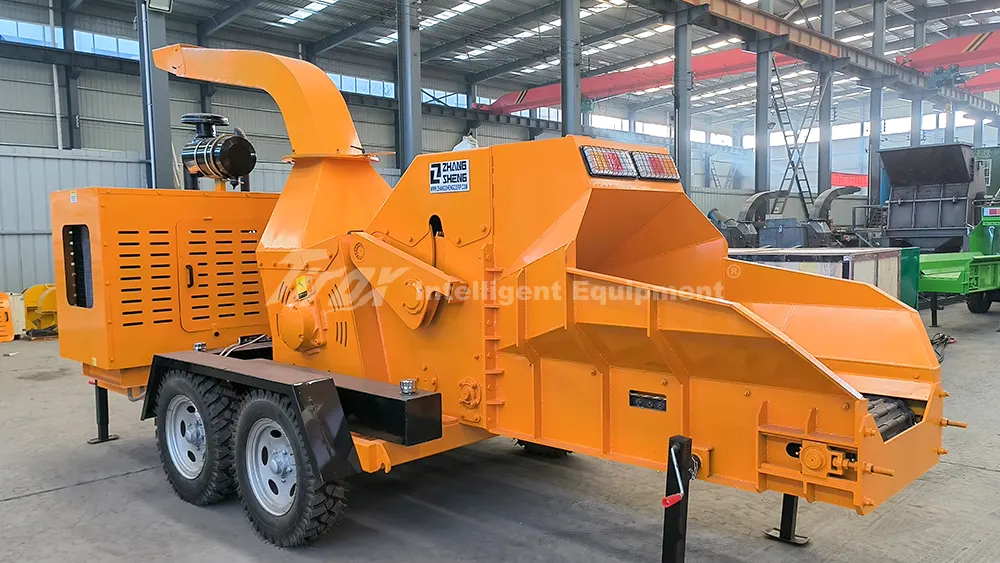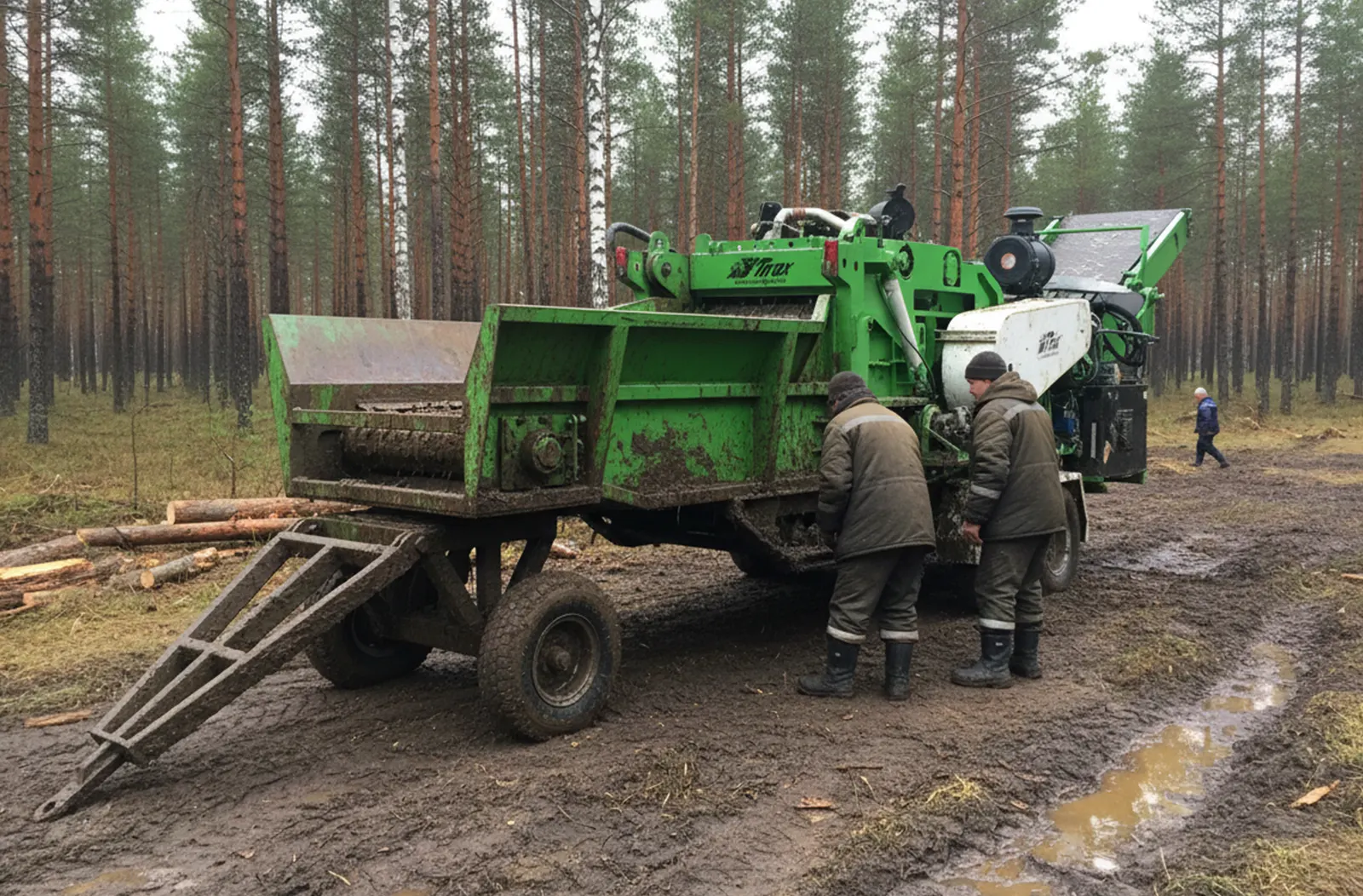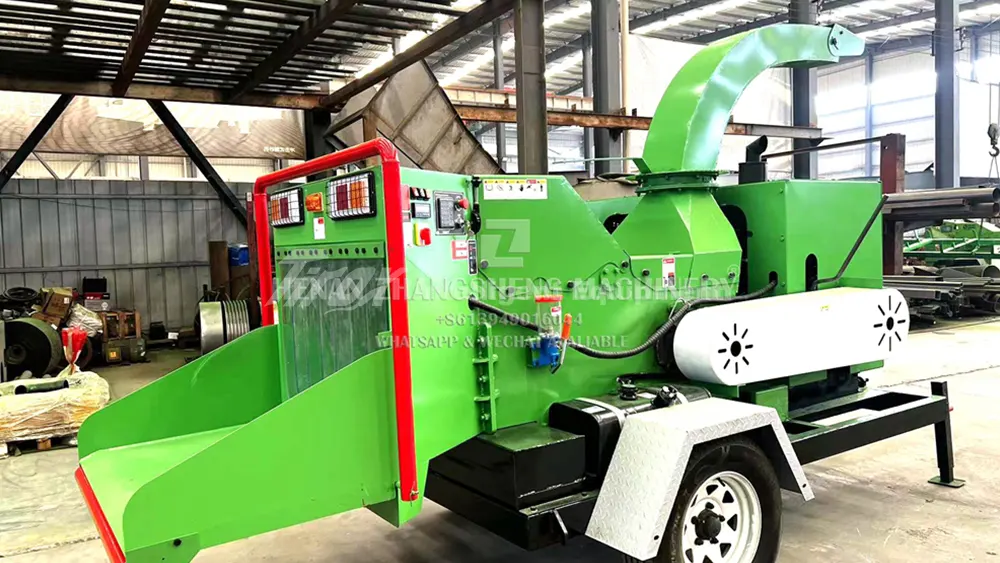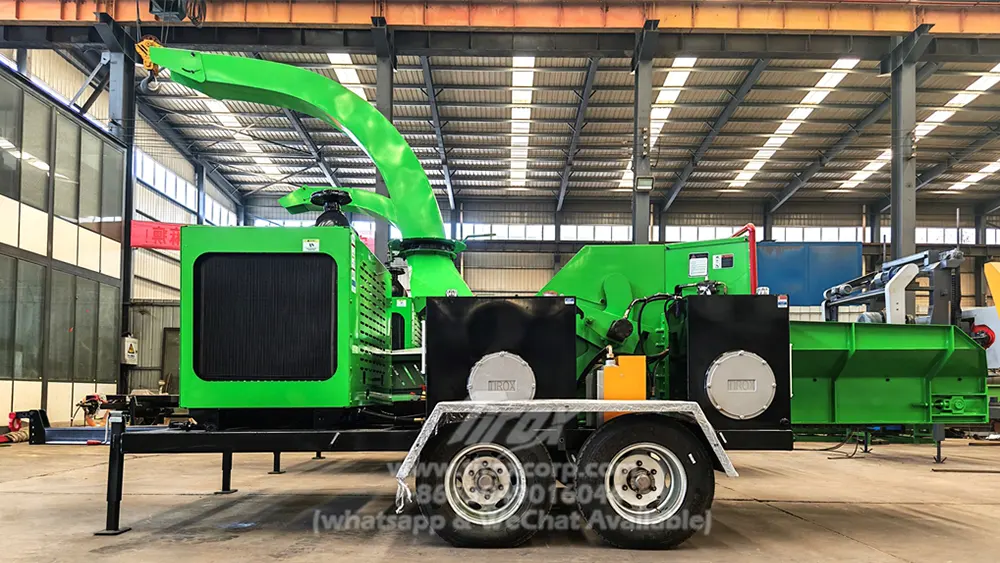The choice between a wood chipper and shredder can significantly impact efficiency and profitability in forestry and biomass operations. Are you making the right decision?
Wood chippers and shredders differ fundamentally in their processing mechanisms, output characteristics, and material suitability. Chippers use sharp blades for clean wood, producing uniform chips, while shredders tackle mixed waste with tearing and grinding, yielding coarse output.
Choosing the right equipment requires understanding your feedstock, processing goals, and operational needs. Let’s dive deeper into the distinctions and help you make the best investment.
What Makes an Industrial Wood Chipper Unique?
When precision and uniformity in wood processing matter most, industrial wood chippers provide a dependable solution. But what sets them apart?
Industrial wood chippers operate with high-speed cutting actions using sharp blades, producing consistently sized wood chips ideal for applications like pulp production, biomass fuel, and landscaping mulch.

Chippers excel with clean wood feedstock, such as logs, branches, and forestry residues. Their mechanism ensures uniformity for industries that require precise particle size. Here’s a closer look at how they work:
Key Features of Industrial Wood Chippers:
- Mechanism: High-speed cutting action using knife, drum, or disc chippers.
- Output: Uniform and consistently sized wood chips.
- Feedstock: Clean logs, branches, forestry residues, and whole trees.
- Applications: Pulp production, particleboard manufacturing, landscaping mulch, biomass fuel.
For businesses prioritizing clean wood processing and uniform output, chippers are the ultimate choice. Learn more about wood chippers here.
What Defines an Industrial Wood Shredder?
Handling mixed and contaminated wood waste is a challenge. Industrial shredders step in where chippers fall short. How do they achieve this?
Industrial wood shredders use low-speed, high-torque mechanisms to tear, rip, and grind materials. They handle mixed waste and produce irregular, fibrous output ideal for composting, recycling, or alternative biomass fuel.
Shredders are robust machines capable of processing dirty, heterogeneous feedstock. They thrive in challenging environments where clean output isn’t necessary. Let’s break down their functionality:
Key Features of Industrial Wood Shredders:
- Mechanism: Low-speed tearing and grinding with hammers or rotors.
- Output: Irregular, fibrous material with varied particle sizes.
- Feedstock: Demolition wood, pallets, stumps, green waste, contaminated materials.
- Applications: Volume reduction, landfill diversion, composting, recycling.
If your operations involve diverse and mixed waste, shredders are your go-to solution. Explore shredding solutions here.

What Are the Core Differences Between Chippers and Shredders?
Choosing between a chipper and shredder depends on several factors. Let’s examine the key distinctions that influence your decision.
Industrial chippers specialize in precision cutting for clean wood, offering uniform output, while shredders are designed for brute force tearing, handling mixed and contaminated waste with varied output quality.
Comparison Table: Chipper vs. Shredder
| Feature | Wood Chipper | Wood Shredder |
|---|---|---|
| Processing Method | High-speed cutting | Low-speed tearing |
| Output Quality | Uniform, clean chips | Irregular, fibrous material |
| Material Suitability | Clean logs, branches | Mixed, contaminated waste |
| Maintenance | Blade sharpening | Hammer/tooth replacement |
Understanding these distinctions ensures you choose equipment that matches your feedstock and operational goals. Find out which machine suits your needs.
How Do You Choose Between a Chipper or Shredder?
Making the right equipment choice begins with a clear assessment of your feedstock and desired output. What factors should you consider?
Evaluate material type, contamination level, moisture content, and throughput requirements to determine whether a chipper or shredder aligns with your operations. Each machine has unique strengths.
For clean wood processing, opt for chippers. For bulk waste with contaminants, shredders provide flexibility. Need both? Hybrid solutions might be your answer.
Factors to Consider:
- Feedstock Profile: Logs, branches, mixed waste, contamination levels.
- Output Specifications: Particle size, uniformity, bulk density.
- Operational Costs: Energy consumption, maintenance, wear part replacement.
- End Application: Biomass fuel, compost, pulp manufacturing.
Choose equipment tailored to your needs for maximum ROI. Learn more about optimizing wood processing operations.
Conclusion
Understanding the differences between wood chippers and shredders ensures you invest in the right equipment for efficient and profitable operations.






